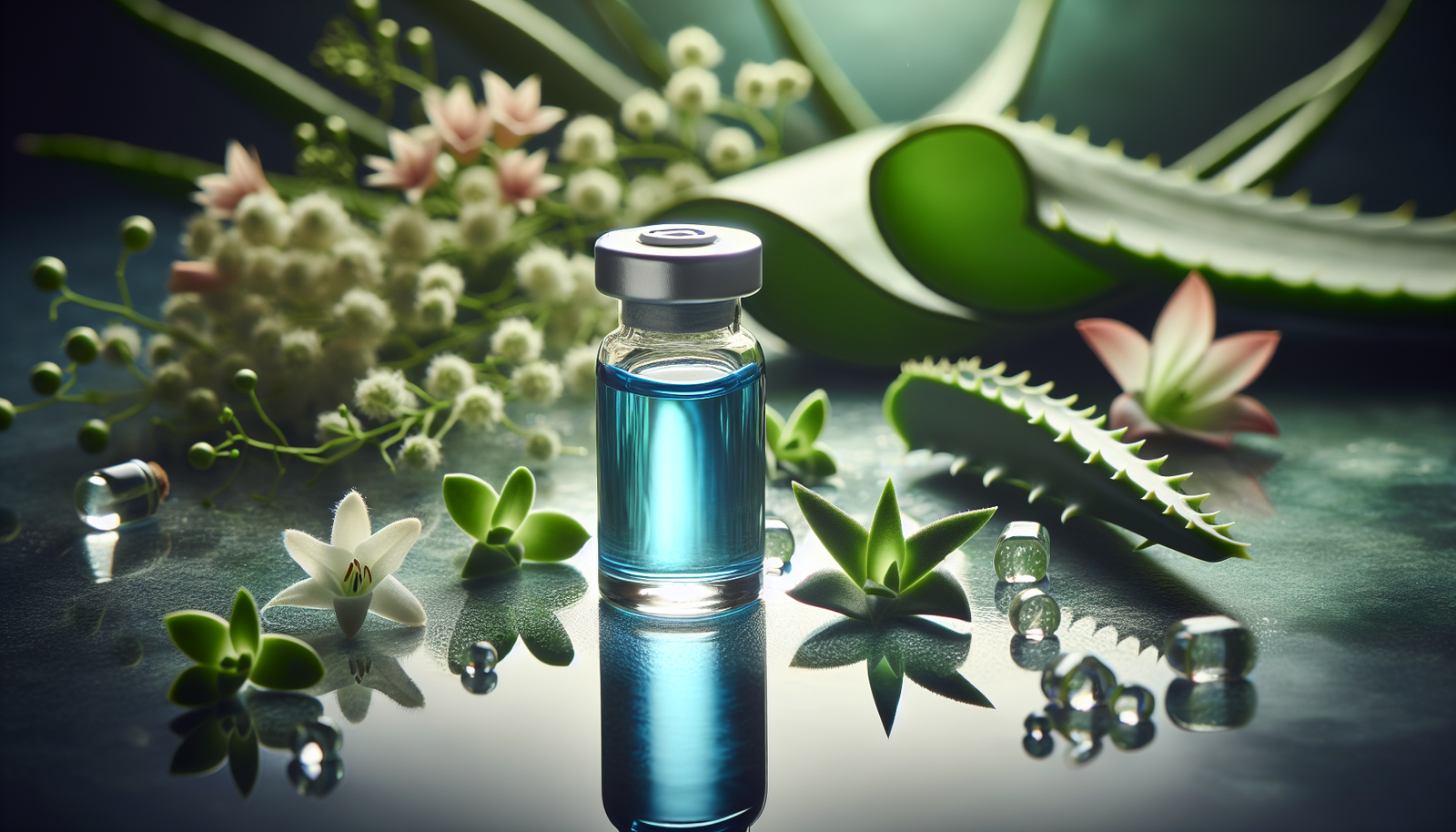
Have you ever wondered how certain compounds can significantly impact your skin health and overall appearance? One such compound catching attention in the realm of skincare is methylene blue, a substance traditionally used in medical settings. Yet, recent studies suggest that its benefits extend far beyond the confines of a laboratory. This article will examine how methylene blue enhances skin cell regeneration, delving into its mechanisms, applications, and the potential it holds for skincare.

Understanding Methylene Blue
Methylene blue is an organic dye with a long history of use in medicine. Originally synthesized in the late 19th century, it served primarily as a dye for textiles before finding its applications in the medical field, including as an antiseptic, a treatment for methemoglobinemia, and even for certain types of cancers. Over time, researchers have unravelled a myriad of other benefits, particularly regarding cellular respiration and regeneration.
Chemical Composition and Properties
Methylene blue is notable for its unique chemical structure, which allows it to participate in redox reactions. This property is critical as it facilitates electron transport within cells, an essential process for energy production. By participating in these metabolic pathways, methylene blue can enhance mitochondrial function, ultimately leading to improved cellular health.
Mechanism of Action
At its core, methylene blue interacts with the mitochondria, the powerhouse of the cell. By enhancing mitochondrial activity, methylene blue improves ATP production. Adenosine triphosphate (ATP) is vital to cellular repair and regeneration, as it fuels numerous cellular processes.
Furthermore, methylene blue acts as an antioxidant. It reduces oxidative stress, which can lead to cellular damage. This dual action—enhancing energy production and reducing oxidative damage—sets the stage for its application in skin health.
Skin Cell Regeneration Explained
Before delving deeper into methylene blue’s specific benefits, it’s crucial to understand skin cell regeneration. This process is a natural occurrence where old or damaged skin cells are replaced by new ones. The skin undergoes a cycle of regeneration approximately every 28 days in younger individuals, but this process can slow down with age, environmental factors, and lifestyle choices.
Importance of Skin Cell Regeneration
The skin barrier serves multiple essential functions, including protection against pathogens and maintaining hydration. When skin cell regeneration slows, it can result in various skin issues, such as dullness, uneven texture, and increased vulnerability to skin conditions. Hence, promoting efficient cell regeneration is crucial for maintaining a healthy and youthful appearance.
Factors Affecting Skin Cell Regeneration
-
Age: As you age, the natural regeneration cycle of your skin slows down. This affects hydration levels and can lead to the appearance of fine lines and wrinkles.
-
Environmental Stressors: Pollution, UV radiation, and harsh weather conditions can damage skin cells and inhibit regeneration.
-
Diet and Lifestyle: Nutritional deficiencies and unhealthy habits can negatively impact skin health, influencing regeneration cycles.
The Role of Methylene Blue in Skin Cell Regeneration
Now that you have a foundational understanding of methylene blue and skin cell regeneration, it’s time to explore how this compound contributes to the skin’s health and rejuvenation.
Enhancing Mitochondrial Activity
As previously mentioned, methylene blue enhances mitochondrial function. For skin cells, this translates to improved energy levels essential for repair processes. The increased ATP production helps expedite the turnover of skin cells, facilitating faster regeneration and leading to an overall improvement in skin appearance.
Cellular Repair Mechanisms
In addition to boosting energy production, methylene blue enhances specific cellular repair mechanisms that are vital for skin health. Research indicates that this compound promotes DNA repair and stimulates the production of proteins vital for cellular integrity, further aiding in the regeneration process.
Table: Key Benefits of Methylene Blue in Cellular Repair
| Benefit | Description |
|---|---|
| Improved Energy Production | Increases ATP levels, providing energy for cell functions. |
| Enhanced DNA Repair | Stimulates pathways that facilitate the repair of damaged DNA. |
| Protein Synthesis | Promotes the production of proteins essential for skin structure. |
Reducing Oxidative Stress
Oxidative stress is a significant barrier to effective skin cell regeneration. Environmental irritants produce free radicals, which can damage skin cells, leading to accelerated aging. Methylene blue’s role as an antioxidant can help neutralize these free radicals, minimizing their impact and allowing skin cells to repair and regenerate more effectively.
Supporting Collagen Production
Collagen is a fundamental protein that provides structure and elasticity to your skin. Methylene blue also plays a role in collagen synthesis, further enhancing the skin’s regeneration capabilities. By promoting collagen production, methylene blue helps maintain skin firmness and reduce the appearance of fine lines and wrinkles.
Practical Applications of Methylene Blue in Skincare
Given its numerous benefits, the next logical question is how you can incorporate methylene blue into your skincare routine. There are various applications to consider, depending on your skin type and concerns.
Topical Treatments
-
Methylene Blue Serums: Several brands have begun incorporating methylene blue into their serum formulations. These serums often target skin regeneration and anti-aging, promising to revitalize dull and tired skin.
-
Masks: Methylene blue-infused masks can provide an intensive treatment option. These can deliver a concentrated dose of the compound, promoting cellular repair while also imparting hydration.
-
Combination Products: Many skincare products are formulated with a blend of active ingredients. Products combining methylene blue with hyaluronic acid, vitamin C, or peptides can offer synergistic benefits.
Professional Treatments
-
Dermatological Procedures: In more advanced skincare, dermatologists may utilize methylene blue in conjunction with laser treatments. The combination can enhance the efficacy of these procedures, providing a more pronounced anti-aging effect.
-
Microneedling: Some practitioners may incorporate methylene blue during microneedling sessions, where micro-injuries are created in the skin, allowing for enhanced penetration of active ingredients.

Potential Side Effects and Considerations
While methylene blue offers various benefits, it is essential to recognize potential side effects.
Allergic Reactions
Before using methylene blue, conduct a patch test to see if your skin reacts negatively. This can help you avoid allergic reactions, which could include irritation, rash, or redness.
Staining
Being a dye, methylene blue may stain the skin temporarily, giving it a bluish tint. This effect can be minimized with careful application and cleansing.
Interactions with Other Treatments
If you are using other topical treatments, consult with a dermatologist to ensure there are no adverse interactions. This is particularly important for those undergoing treatment for specific skin conditions.
The Future of Methylene Blue in Skincare
Research surrounding methylene blue continues to evolve. As scientists unravel more of its cellular benefits, you may expect to see more innovative formulations in the skincare industry.
Potential Research Directions
-
Long-term Effects: Current studies focus on immediate benefits, but more research is needed to understand the long-term effects of methylene blue on skin health.
-
Development of New Formulations: Future research may lead to the development of new products that harness methylene blue’s capabilities while minimizing potential side effects.
-
Broader Applications: Beyond skincare, methylene blue may find applications in treating other dermatological conditions, such as acne or hyperpigmentation.

Conclusion
Methylene blue’s capacity to enhance skin cell regeneration marks its relevance in modern skincare. By bolstering mitochondrial function, promoting collagen synthesis, and significantly reducing oxidative stress, this compound offers multiple avenues for achieving healthier, more youthful skin. As ongoing research continues to unveil its potential, consider consulting with a skincare professional to explore how methylene blue can fit into your regimen and elevate your skincare routine.
Ultimately, understanding the power of methylene blue is not just about its individual benefits; it’s about embracing scientifically backed compounds that can truly transform your skin health, one cell at a time.